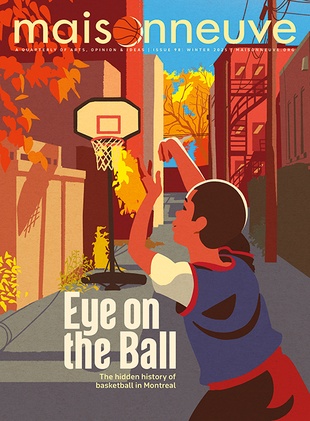The Spring 2025 Book Room
The Dissident Club
In The Dissident Club (Arsenal Pulp), Pakistani journalist Taha Siddiqui crafts a politically urgent account of his life story. The narrative, illustrated by French artist Hubert Maury, moves between the phases of Siddiqui’s life: from his childhood in Saudi Arabia, where he lived under the watchful eye of his increasingly radicalized father, to the dangerous waters of Pakistani journalism, where exposing military corruption marked him as a target. What elevates the graphic memoir beyond mere political thriller is Siddiqui’s frank examination of complex family dynamics, particularly his relationship with his father. The ideological battles between the two become microcosms of larger cultural tensions, and aren’t simplified into the binary opposition of enlightenment versus fundamentalism. Maury’s expressive illustrations bring vibrant life to Siddiqui’s journey to personal liberation, which culminates in the opening of his Paris bar and cultural centre dedicated to political dissidents from which the book gets its name. The Dissident Club doesn’t just document one man’s fight against religious extremism and military corruption—it stands as testimony to journalism’s essential role in speaking truth to power, even when it comes at a price. —Caroline Bellamy
Story of Your Mother
Writer and editor Chantal Braganza’s debut book of essays spends much of its pages contemplating language: how to reach toward the words that can adequately explain one’s identity, whether such a task can be achieved. This concern with language’s specificity is reflected in the mysteriously powerful title, Story of Your Mother (Strange Light). The second-person pronoun used here—and in other parts of the book which are addressed to the author’s children—implicates the reader in the story, bringing them inside the scope of a deeply personal work rather than leaving them outside as a mere witness. Throughout Story of Your Mother, Braganza weaves together discussions of her family, childhood, pregnancies and motherhood alongside cultural criticism, shifting quickly between reminiscences of time spent with family in Puerto Vallarta, Mexico and analyses of the theory of linguistic relativity as it is embedded in the 2016 sci-fi flick Arrival. It’s a fragmentary approach to writing that feels intimate and honest, the ideas building off one another to form a mosaic that reveals itself as the book goes on. Story of Your Mother is an unflinching attempt to build a portrait of a life and a self in relation—to family, to origins, to places and to thought. —Nour Abi-Nakhoul
Quietly, Loving Everyone
With his debut collection of short stories, Quietly, Loving Everyone (Véhicule), Curtis John McRae explores slices of everyday life. McRae’s stories intertwine the overlapping emotions that underlie our lives with descriptions of grief and its impacts. The characters’ inner monologues unravel the ways in which grief contains difficult feelings like anger, sadness and confusion, alongside, ultimately, profound love. This array of emotions is channelled through the diversity of the stories, which are equally humorous and earnest. In “Love Cinema,” two people spend a first date dissecting the artistry of the films screened at an old porn theatre, before reflecting on their pasts and the other lives they could have lived. In “Raising James Dean,” the actor is resurrected by a teenager as a way to cope with missing a friend who has moved away. McRae’s colourful writing vividly fleshes out images that would otherwise be mundane: shower curtains, the scenery outside car windows on a road trip. The quotidianness of the story’s settings reveal an appreciation for the beauty and meaningfulness of ordinary life. Quietly, Loving Everyone is a heartfelt collection that lives up to its name, as it demonstrates the subtle tolls that love and grief can take on a person. —Alexa MacKie
Amaranthine Chevrolet
A hundred and thirty-six dollars and some change is all fifteen-year-old Robin Wallenco has at the beginning of the novel Amaranthine Chevrolet (Dundurn). Wallenco is a young farmhand who, after the passing of the man who had employed him, embarks upon a road trip with what he sees as his sole salvation in his quickly changing world—a beat-up 1942 Chevrolet pickup truck. Dennis E. Bolen’s coming-of-age story is set in the 1960s, but it avoids tired cliches about the decade, expertly directing the lens away from the cultural and historical events of the period. Instead, it’s Wallenco’s badly thought-out journey from Glenbain, Saskatchewan to Victoria, BC that takes centre stage. The charm of the book shines through descriptions of falling-apart hamlets, small towns, tall grasses and travelling camps of hippies. Through the undying prairie hospitality exhibited by the folks who pick up the tabs for Wallenco’s breakfasts, shelter him and draw up plans to help him elude the RCMP officers looking for him, Amaranthine Chevrolet establishes itself as a love letter to rural Canadian life. —Nathan Abraha





